Dongjin Lim
Multi label classification of Artificial Intelligence related patents using Modified D2SBERT and Sentence Attention mechanism
Mar 03, 2023



Abstract:Patent classification is an essential task in patent information management and patent knowledge mining. It is very important to classify patents related to artificial intelligence, which is the biggest topic these days. However, artificial intelligence-related patents are very difficult to classify because it is a mixture of complex technologies and legal terms. Moreover, due to the unsatisfactory performance of current algorithms, it is still mostly done manually, wasting a lot of time and money. Therefore, we present a method for classifying artificial intelligence-related patents published by the USPTO using natural language processing technique and deep learning methodology. We use deformed BERT and sentence attention overcome the limitations of BERT. Our experiment result is highest performance compared to other deep learning methods.
5-Star Hotel Customer Satisfaction Analysis Using Hybrid Methodology
Sep 26, 2022

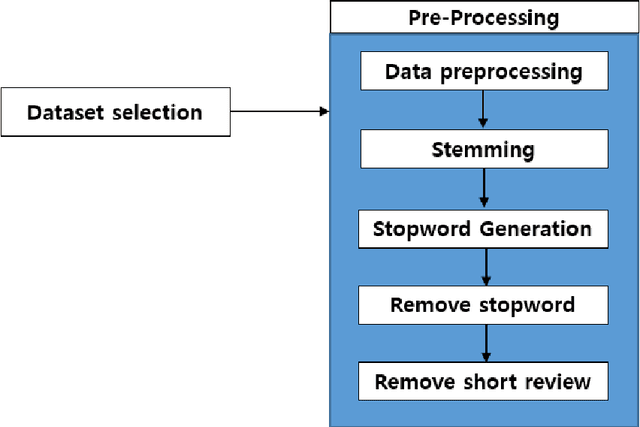

Abstract:Due to the rapid development of non-face-to-face services due to the corona virus, commerce through the Internet, such as sales and reservations, is increasing very rapidly. Consumers also post reviews, suggestions, or judgments about goods or services on the website. The review data directly used by consumers provides positive feedback and nice impact to consumers, such as creating business value. Therefore, analysing review data is very important from a marketing point of view. Our research suggests a new way to find factors for customer satisfaction through review data. We applied a method to find factors for customer satisfaction by mixing and using the data mining technique, which is a big data analysis method, and the natural language processing technique, which is a language processing method, in our research. Unlike many studies on customer satisfaction that have been conducted in the past, our research has a novelty of the thesis by using various techniques. And as a result of the analysis, the results of our experiments were very accurate.
Artificial Intelligence Technology analysis using Artificial Intelligence patent through Deep Learning model and vector space model
Nov 08, 2021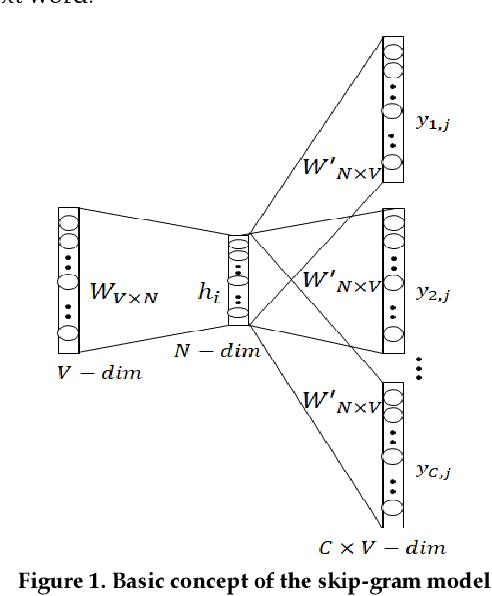


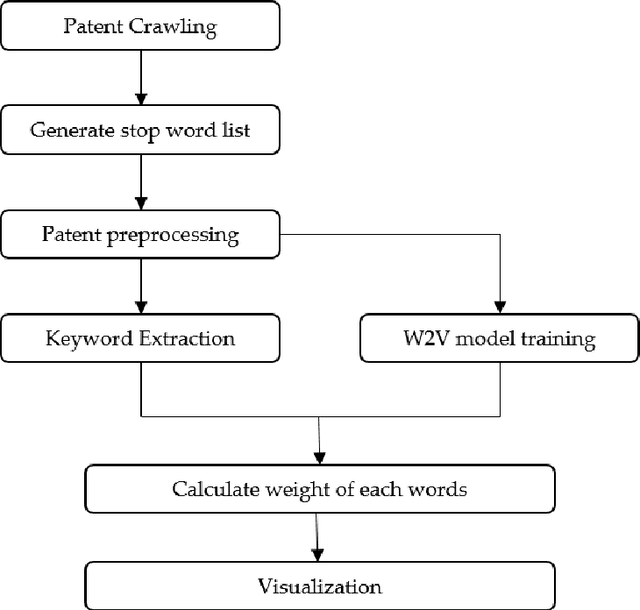
Abstract:Thanks to rapid development of artificial intelligence technology in recent years, the current artificial intelligence technology is contributing to many part of society. Education, environment, medical care, military, tourism, economy, politics, etc. are having a very large impact on society as a whole. For example, in the field of education, there is an artificial intelligence tutoring system that automatically assigns tutors based on student's level. In the field of economics, there are quantitative investment methods that automatically analyze large amounts of data to find investment laws to create investment models or predict changes in financial markets. As such, artificial intelligence technology is being used in various fields. So, it is very important to know exactly what factors have an important influence on each field of artificial intelligence technology and how the relationship between each field is connected. Therefore, it is necessary to analyze artificial intelligence technology in each field. In this paper, we analyze patent documents related to artificial intelligence technology. We propose a method for keyword analysis within factors using artificial intelligence patent data sets for artificial intelligence technology analysis. This is a model that relies on feature engineering based on deep learning model named KeyBERT, and using vector space model. A case study of collecting and analyzing artificial intelligence patent data was conducted to show how the proposed model can be applied to real world problems.
Solar cell patent classification method based on keyword extraction and deep neural network
Sep 18, 2021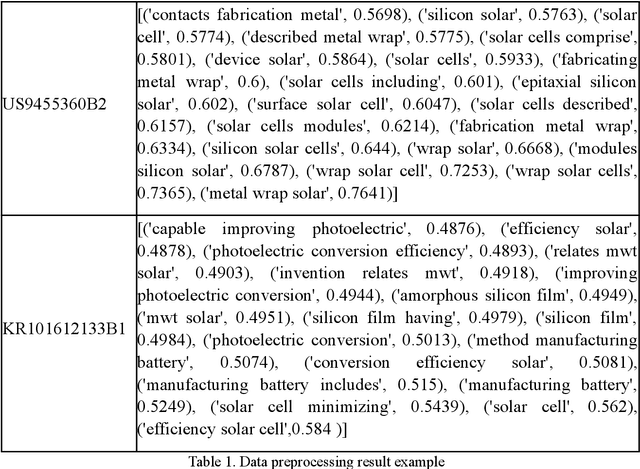

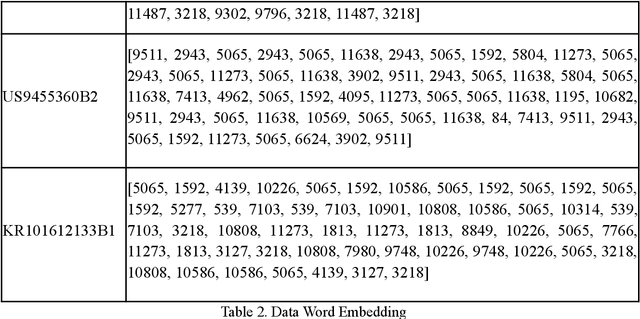
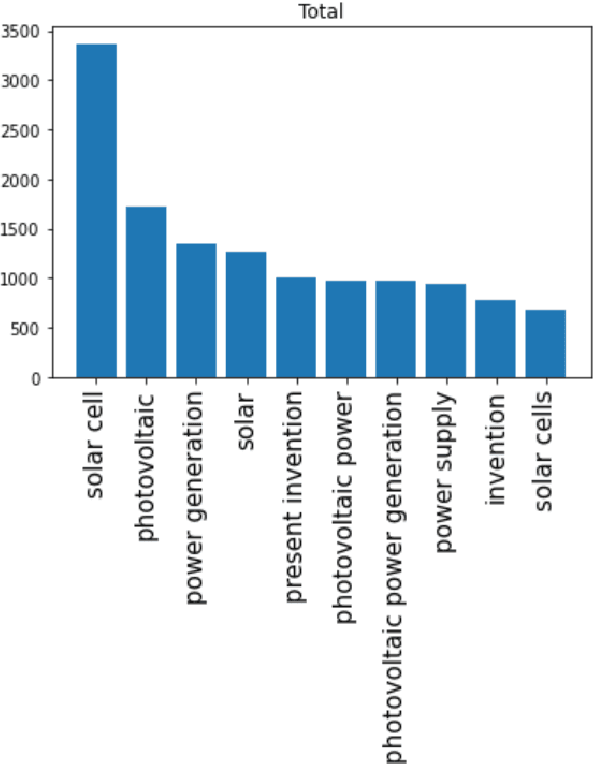
Abstract:With the growing impact of ESG on businesses, research related to renewable energy is receiving great attention. Solar cells are one of them, and accordingly, it can be said that the research value of solar cell patent analysis is very high. Patent documents have high research value. Being able to accurately analyze and classify patent documents can reveal several important technical relationships. It can also describe the business trends in that technology. And when it comes to investment, new industrial solutions will also be inspired and proposed to make important decisions. Therefore, we must carefully analyze patent documents and utilize the value of patents. To solve the solar cell patent classification problem, we propose a keyword extraction method and a deep neural network-based solar cell patent classification method. First, solar cell patents are analyzed for pretreatment. It then uses the KeyBERT algorithm to extract keywords and key phrases from the patent abstract to construct a lexical dictionary. We then build a solar cell patent classification model according to the deep neural network. Finally, we use a deep neural network-based solar cell patent classification model to classify power patents, and the training accuracy is greater than 95%. Also, the validation accuracy is about 87.5%. It can be seen that the deep neural network method can not only realize the classification of complex and difficult solar cell patents, but also have a good classification effect.
 Add to Chrome
Add to Chrome Add to Firefox
Add to Firefox Add to Edge
Add to Edge